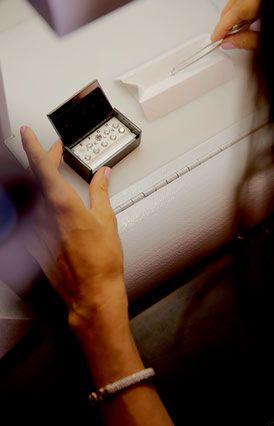
41 minute read
This ‘N That
Hair today, gone tomorrow
The biblical story of Samson says he needed his hair for his strength. But does hair truly defi ne the man?
STORY: FRED HILTON
Proving once again that I have too much time on my hands, I calculated the number of times I have shaved in my life. Remember, there are lot of years involved here. The number I came up with is a staggering 21,170—give or take a few hundred.
The number 21,170 might sound pretty precise but it’s only an estimate. It doesn’t consider those pesky February 29th’s that pop up every now and then. It also doesn’t include that day in September 1987 when I shaved twice or the time in January 2003 that I didn’t shave at all. In addition, it ignores those days in boot camp when I shaved every 30 minutes to keep that surly man with all the stripes on his arm from yelling at me.
Assuming that it takes me about four minutes to shave, I’ve spend 86,800 minutes over the years doing nothing but shaving. That amounts to more than 60 days – two months! (Don’t forget that I’m math-challenged.) If that number is right, or even nearly right, it means that I’ve spent 60 days that surely could have been put to better use. I could have learned to speak Portuguese, written the great American novel, climbed Mount Everest (or at least one of Florida’s larger hills). Actually, instead of missing a chance to learn Portuguese, I was really thinking about how nice it would be to have 60 more days of eating, drinking, or being involved in fun activities that one should not discuss in a family magazine.
It may be time to pull a David Letterman. Have you seen old Dave lately? Well, the 71-year-old clean-shaven king of late-night television is no more. The smooth-cheeked reader of 4,600 Top Ten lists has disappeared. He’s been replaced by a scruffy, hairy guy who has a humongous grey beard that sprouts in about 82 different directions.
The New York Times wrote a long story about Letterman and his new beard. One might think that Letterman was making some bold sociological statement by not shaving or perhaps expressing a deep and profound statement about the duality of man. (I have no idea what that means but I heard it in a movie once and it sounded cool.) Letterman’s reason for the beard was a lot less philosophical: “I just got tired of shaving every day.”
The new beard, the Times said, makes Dave look “either like a lanky Santa Claus or an escapee from an asylum.” The asylum escapee analogy is right on, but the Santa Claus one falls short. Dave actually looks more like a tall Gabby Hayes with a cigar.
Gabby Hayes-look or not, the idea of not shaving did have some appeal to me—at least until my wife rolled her eyes and reminded me of the Great Mustache Mistake. A few years back, everybody where I worked was growing a mustache. I tried but found that my facial hair grows very, very slowly. (My 5 o’clock shadow is a 5 o’clock fuzzywuzzy.) For weeks, while my mustache was trying to come to life, my upper lip looked like a small caterpillar with a crew cut was taking a nap there.
It’s amazing to see the number of people in my demographic (meaning old, fat men) who have facial hair. They have glorious handle-bar mustaches, bushy sideburns, goatees, and dozens of other options. There also are all those guys who have fuzzy faces that look like they haven’t shaved in the last three days, which, of course, they haven’t. That won’t work for me since it would take three weeks to get the same look.
All of this means that growing a mustache or any kind of beard is out for me. Maybe I should give up haircuts. There are those, including my wife, who claim that I’ve already done that.
There was a time not long ago when long hair on men was not only accepted, it also was applauded. Remember those days of wonderful fashions for men, like fl owered bell trousers, leisure suits, and the remarkably weird Nehru jacket? My hair was about average for those psychedelic days—meaning it hit my shoulders.
During this delightful era, I took a job at a college in an ultraconservative small town. On my fi rst day on the job, the New Boss called me into his offi ce. With a very somber face, New Boss said, “W e need you to do something.”
Since I was a smashing-looking young fellow (in my mind anyway), I was certain he was going to tell me not to hanky-panky with the coeds since they wouldn’t be able to resist me. I was ready to tell him that I was happily married and, besides, I didn’t want to become a Harvey Weinstein in 30 years.
New Boss just looked me square in the eye and said: “Get a haircut.”
MAY 2018 EDITION
Skin Cancer: Know the Signs
Did you know that doctors recommend checking your skin regularly? Our moles, blemishes, freckles, and other marks are unique. They can change over time, from aging or from seasonal variation, but also from skin cancer. How can you tell when you should see your doctor?
Learn your skin patterns. Skin self-exams work best in a well-lit room before a full-length mirror. Use a hand-held mirror for hardto-see places like the backs of your thighs. Examine all areas, including your palms and soles, scalp, ears, nails, and back.
Tell your doctor about any spots on your skin that are new or changing in size, shape, or color, or if you find any unusual sores, lumps, blemishes, or markings. Changes in how your skin looks or feels could be a cancer warning sign. Signs include skin that is red, swollen, scaly, or crusty, that feels itchy, tender, or painful, or that is oozing and bleeding.
Key warning signs for basal cell and squamous cell carcinomas include a new growth, a spot or bump that grows larger, or a sore that doesn’t heal within a few weeks. Key warning signs for melanomas also include mole changes. Sometimes even doctors can’t tell the difference between melanoma and an ordinary mole, another good reason to learn your skin and to be aware of any changes.

Main Types of Skin Cancers
Basal cell carcinoma
accounts for about 80% of non-melanomas.
Squamous cell
carcinoma accounts for about 20% of nonmelanomas. Melanoma, though rare, is much more likely to grow and spread if left untreated.
Did You Know?
Exposure to certain
chemicals (like arsenic) can increase your risk of skin cancer. Radiation exposure, especially for children who received radiation treatment, can increase the risk of skin cancer.
Additional Skin Cancer Risk Factors
1. Exposure to ultra-violet (UV) rays from sun and from tanning beds 2. Light-colored skin 3. Previous skin cancer 4. Long-term or severe skin inflammation or injury.


Moles: Benign, or Melanoma?
When examining moles, use the ABCDE rule:

A=Asymmetry: One half of a mole or birthmark does not match the other. B=Border: Edges are irregular, ragged, notched, or blurred. C=Color: Color is not the same all over and may include different shades of brown or black, or may have patches of pink, red, white, or blue. D=Diameter: Spot is larger than 6 millimeters across (about pencil eraser width). E=Evolving: The mole’s size, shape, or color changes.
Also check to see if a spot looks different from all the other spots on your skin. If you see something that doesn’t look right or that causes you concern, tell your doctor.

quick quote “Skin has a good memory. Skin is like the ground we walk on every day; you can read a whole history in it if you know how to look”
— Caroline Kettlewell
by the numbers
91,270
The estimated number of melanoma cases that will be diagnosed in the U.S. in 2018

Herman Flink, MD
Radiation Oncologist at RBOI
Protect Yourself with Sunscreen
>3 million
The estimated number of non-melanoma skin cancers diagnosed in the U.S. each year
30
Minimum recommended SPF strength for sunscreen
Most of us are aware of the cause of skin cancer: Excess sun exposure. The important thing to note is the sun exposure in our youth and subsequent few decades which leads to the skin cancers that develop in our 50s, 60s, and 70s. Avoiding sun exposure at any age is worthwhile, but when we are with our grandchildren, urge either minimal Sun exposure or the liberal use of sunscreen, SPF 30 or more.
92%
5-year survival rate among all people with melanoma of the skin, from the time of initial diagnosis
Patient-centered radiation oncology close to home
THE VILLAGES 352.259.2200 OCALA 352.732.0277 TIMBER RIDGE 352.861.2400 INVERNESS 352.726.3400 LECANTO 352.527.0106 RBOI.COM
Like us on Facebook


June Lew: Sitting on Top of the World
Whether pursuing her dream to help doctors build successful medical practices, shooting wildlife on a Serengeti photo Safari, or climbing to the summit of a mountain range in China, June Lew approaches every new opportunity with passion and the drive to positively impact lives.
Twin Medical Consultants

Twinning the ‘art and science’ of medicine with the ‘business’ of medicine helps make practices perfect. And no one understands that better than June Lew.
She and business partner Gary Blakely are the principals in Twin Medical Consultants, a company which makes it easier for physicians to take care of businessrelated and IT issues within their practices so they, their physician assistants and nurses, and their administrative teams can focus on a much greater priority… diagnosing, treating and caring for patients.
“Above all, a physician’s commitment and obligation is to his or her patients—to doing what’s in their best interest,” said June. “Gary and I help doctors solve some of their most complex business and technology problems, so they have more time to be doctors and care for their patients,” she added.
Whether a doctor or practice needs turnkey assistance to open an office, assistance with billing, a fully integrated information technology system, or help merging with, or acquiring, new practices, Twin Medical Consultants is here to help.
“We help practices run smoothly by providing as much or as little help as they need. Our clients include physicians who are opening or restarting medical practices and want to establish best practices right from the start, practices that are successful, but want to make improvements to encourage growth, and those that need to implement changes to see improvements quickly.
“After 25 years of experience working with a medical practice, I have become something of an efficiency expert,” said June. “I use the practice’s own staff to fix their particular problems, helping them to perform better and cut inefficiencies. I provide spreadsheets, so they get the proper reports on everything, including inventory and where it’s going. This is also an important step in helping them keep up with patient satisfaction.” “Gary and I bring fresh, new insight and advice to a situation to solve problems or to identify any obstacles in the way of the growth and productivity of a practice,” June added.

A Passion for Caring for Doctors…and Their Patients
“We’re not just their consultants, but their friends,” said Gary about the clients he and June work with. “We get joy out of taking a problem and coming up with a solution for it. For
example, we don’t just handle billing. We’re right here, locally, so patients can call us directly with billing questions. So often, a doctors’ office will take a call from a patient with a billing question, call the billing company, call the patient back, and then find out the patient has an additional question. We invite that patient to call us directly, instead. We can answer every billing question until that patient has the information he or she needs, and is satisfied that every question has been answered.
“I’ve seen how many doctors can use our help,” said June, who in 1991, was instrumental in helping to establish a cardiology practice that has now grown to one of the largest and most successful multi-specialty groups in Central Florida. That practice now has more than 25 physicians and 10 offices. She retired in 2017 in order to move ahead full speed with her newest venture.
“This is where my passion is. I see many doctors who are simply burned out after years of struggling with regulations and the demands of an ever-changing healthcare environment—a key reason many small doctors’ offices have been gobbled up by large practices or hospitals. We work sideby-side with these doctors to help them regain their passion by allowing them to do what they do best and enjoy the most.
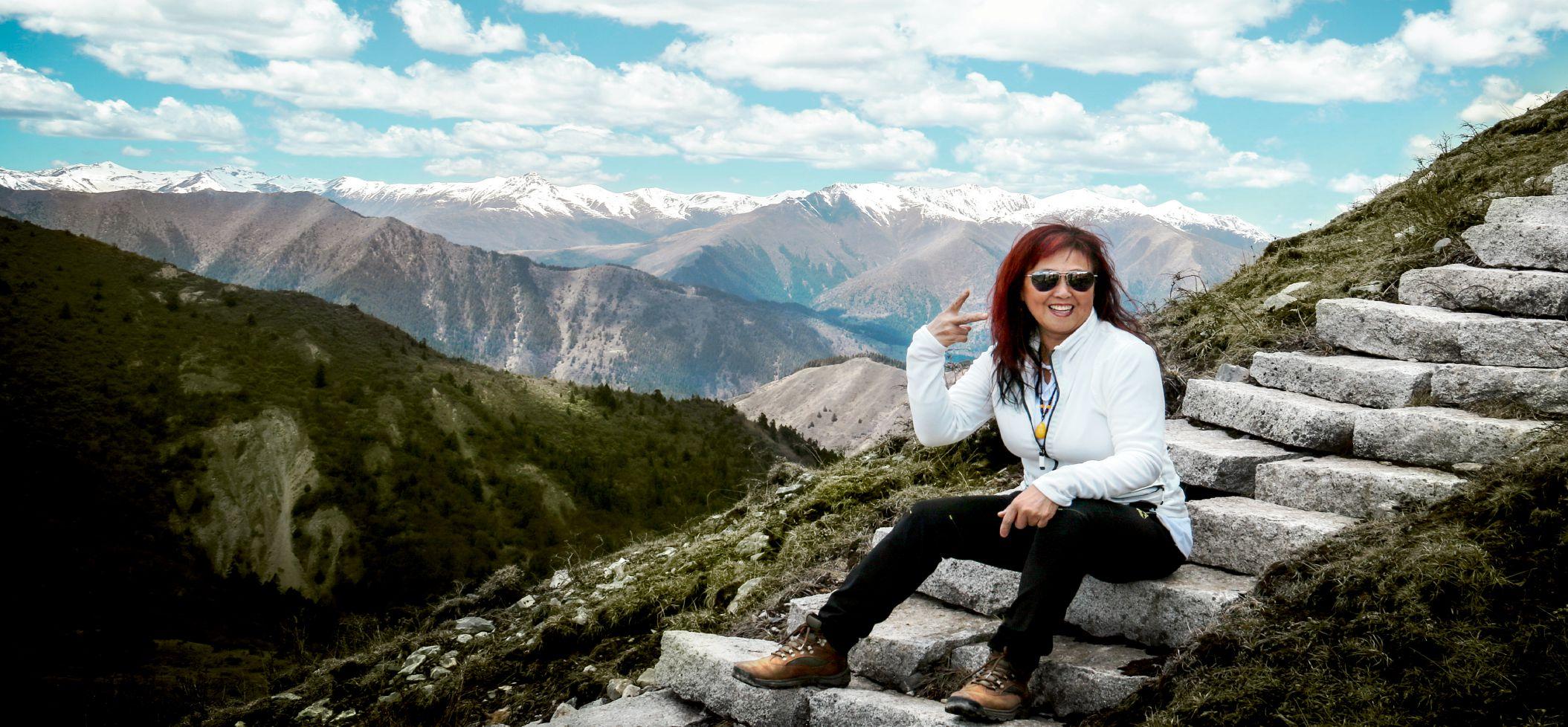
Great Support Translates to Superior Results
Services provided by Twin Medical Consultants run the gamut from billing and coding, help with location selection and buildout, office expansion, Insurances, risk management, purchasing of equipment, marketing, monitoring office flow, analyzing finance and overhead, overseeing accounting and bookkeeping, assisting CPAs on tax planning, inventory control, front office, physician recruiting, strategic planning, and compliance.
“Billing correctly is a critical issue for physicians. Often, a physician’s staff does not have time to follow up with insurances on medical billing issues and this causes money to go uncollected. We offer a fully customizable billing service that helps to increase revenue throughout a medical facility.
If Twin Medical handles a practice’s billing, June’s other medical consulting services are included in the fee.
Gary is equally passionate about handling a practice’s medical IT and tech support needs. With over 20 years of experience in the medical field, he is ready to assist practices with a wide array of services to help them run smoothly and efficiently, creating IT systems from the ground up, or providing whatever a practice may need.
“Doctors today are being compensated based on the quality and value of their services, not the quantity. They’re being held accountable for giving better care instead of more service. We thoroughly understand what it takes to capture the information they need for the merit-based reporting of performance information that Medicare and insurance agencies require today,” said Gary.
—JUNE LEW
Medical Knowledge Boosts IT Productivity
“When a practice calls in just a traditional computer company— most don’t understand the complexities of the

medical field. MIPS and MACRA (quality measures), EHR and EMR (electronic health records and electronic medical records), we completely understand them. We have used many of the software products doctors use like eClinical®, MicroMD®, and Amazing Charts™, and can provide all the hardware and software needed to fully integrate their systems.
“I believe computers should work for us, and helped design a personal health package. A lot of companies sell EHR packages to doctors and then train them to use them. Instead, I look at the doctor’s workflow and create an EHR package that works for them.” “In 2017, if everything was not done correctly, such as billing and coding, a practice could lose on average four percent of their revenue. In 2018, it will be more,” Gary says. “Technological innovations are deeply changing everything around us. Our team at Twin Medical Consultants is driven to succeed in providing healthcare IT solutions for today and tomorrow,” he added.
“It’s exciting to help doctors get back to what they love—practicing medicine and having the time to enjoy their doctorpatient interactions,” said June. We help doctors be doctors, give nurses more time to take care of patients and provide office staffs with the administrational skills they need to operate like a well-oiled machine.
“We want them to enjoy the time they spend in the practice, and we
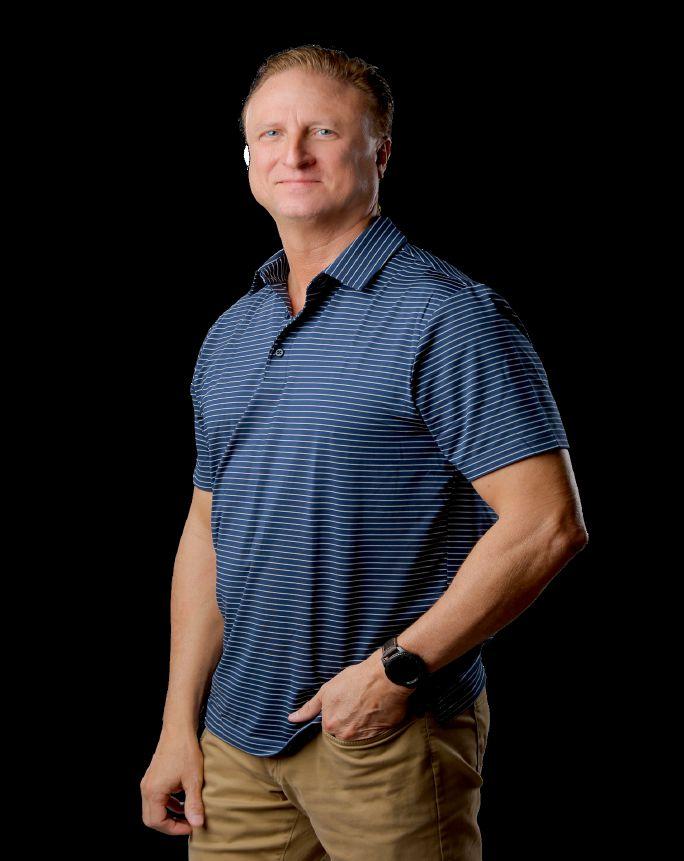

want to give them more time to spend with their families and friends.”
The Dream is Alive
June and Gary work very hard and are very passionate about what they are doing together. Their passion spills over into other aspects of their lives.
For June, who came to the US as a high school sophomore from Seoul, South Korea, the field of medicine has always been a passion. She earned a pharmacy degree from the University of Georgia and worked as a practicing pharmacist in Gainesville for seven years before moving to Leesburg.
While raising her family, June dreamt of becoming a wildlife photographer. Seven years ago, she began realizing her dream, setting out on her first photography safari. For her, this was a pictureperfect second calling.
Since then, June has begun raising awareness of the beauty and fragility of the natural world with a portfolio of captivating wildlife photographs which includes mischievous baby pandas playing together in China, and an awardwinning photograph of a lion balanced majestically on a rock in the Serengeti in Tanzania.
She has been privileged to visit numerous countries to photograph rare and exotic animals, becoming an advocate for the preservation of wildlife in their natural habitats.
—GARY BLAKELY
Other passions she pursues with much the same gusto and drive include tennis, biking, ballroom dancing, scuba diving, cooking and spending time with her family.

Doubling Down on a Great Life
After moving to Florida from Radcliff, Kentucky, in 1987, Gary married the love of his life and soul mate Diane in 1988. Raised in a small town, Gary was attracted to Lake County life.
Today, Gary and Diane have twin daughters who mean the world to them. In fact, keeping them close to his heart was the impetus for the creation of the Twin Medical Consulting company name and logo.
When not working, Gary enjoys riding his Harley, scuba diving and exploring the underwater world, playing video games, going to movies, and reading comics.
Twin Medical Consultants is prepared to help doctors focus on the health of their patients. Call them today.


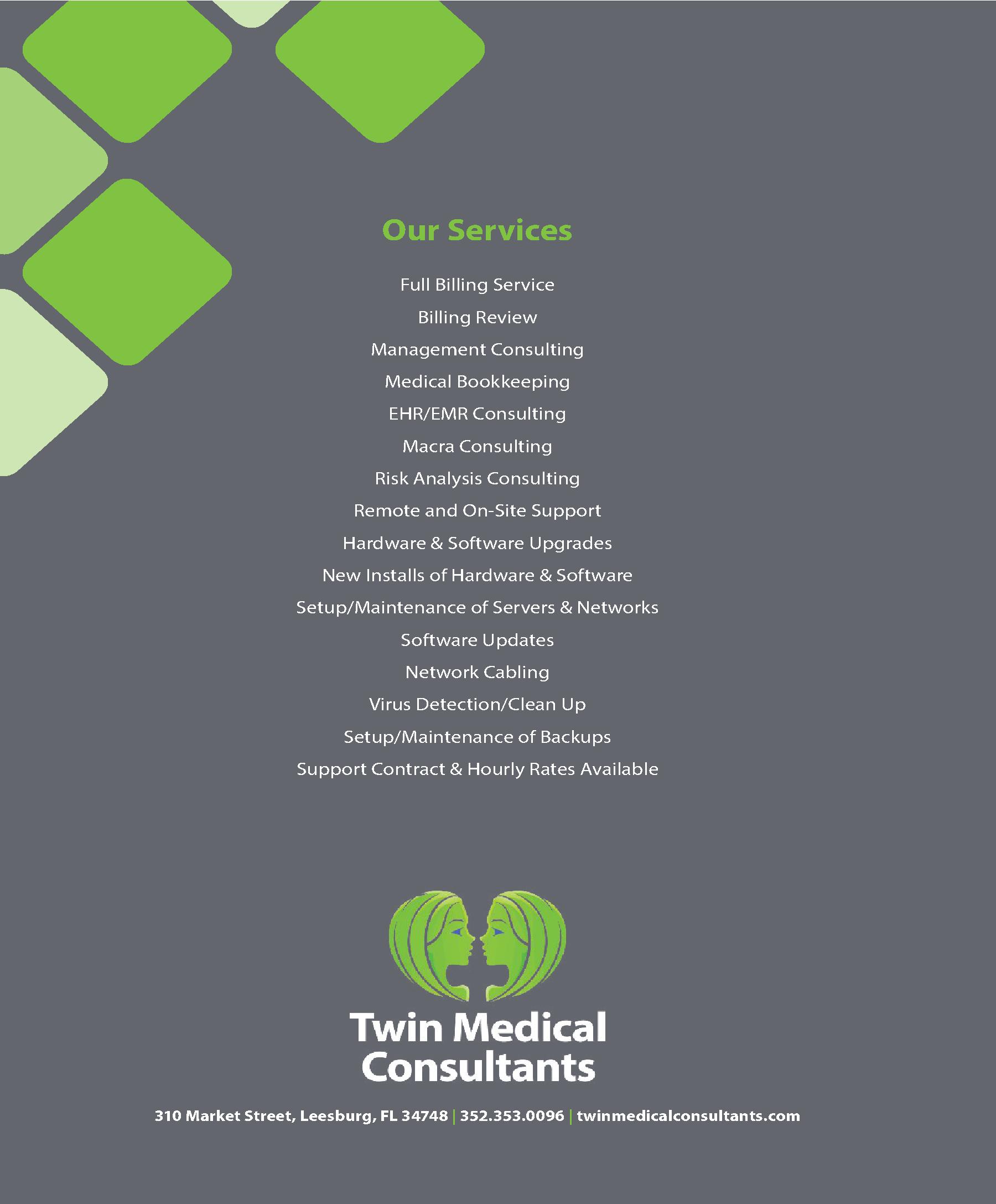

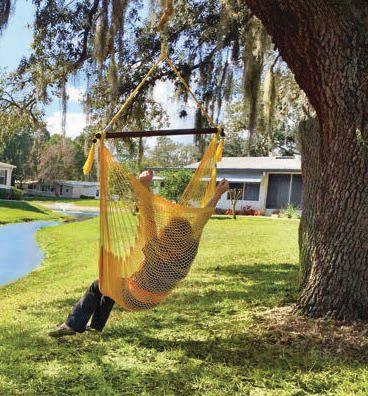
VISIT US ON MAY 12TH FROM 10:00 AM TO 3:00 PM FOR OUR READY, SET, SPRING SALES EVENT! VISIT US ON MAY 12TH FROM 10:00 AM TO 3:00 PM VISIT US ON MAY 12TH FROM 10:00 AM TO 3:00 PM FOR OUR READY, SET, SPRING SALES EVENT! FOR OUR READY, SET, SPRING SALES EVENT!

Experience premier manufactured home living at the amazing waterfront communities of Mid Florida Lakes and Grand Island. O ering over 100 social clubs and activities combined, you can be as relaxed or entertained as you’d like. Feel secure at Mid Florida Lakes with their gated entrance and live like a sherman at Grand Island Resort. Our friendly, on-site team can help you discover your dream home today! Premium Waterfront Sites • Open Floorplans • Brand New Appliances Along the Harris Chain of Lakes • Private Boat Docks Premium Waterfront Sites • Open Floorplans • Brand New Appliances Premium Waterfront Sites • Open Floorplans • Brand New Appliances Along the Harris Chain of Lakes • Private Boat Docks Along the Harris Chain of Lakes • Private Boat Docks NEW HOMES AVAILABLE NOW - CALL FOR A TOUR! NEW HOMES AVAILABLE NOW - CALL FOR A TOUR!
NEW HOMES AVAILABLE NOW - CALL FOR A TOUR! 13330 Sea Breeze Ln | Grand Island, FL 32735200 Forest Drive | Leesburg, FL 34788
Mid Florida Lakes Grand Island Resort
(844) 920-8845 (866) 913-3909
BOOK NOW!
EXPLORE. INDULGE. ESCAPE.

Innisbrook’s Copperhead Course is home to the PGA TOUR’s Valspar Championship, an offi cial 72-hole event held in March. The event featured 144 PGA TOUR golfers, with proceeds from ticket sales benefi ting area charities through the Championship’s Birdies for Tampa Bay Charities program.
Previous champions include Adam Hadwin, Jordan Spieth, Luke Donald, Charl Schwartzel, and defending champion Paul Casey. Previously, Innisbrook was host to 10 JCPenney Classic tournaments that featured mixed teams of PGA TOUR and LPGA Tour professionals.
To experience fi rst-hand what the world’s greatest golfers have enjoyed during the championship week; from spectacular golf to incredible Salamander hospitality, book your package today!

april 5 – may 31
Rates start at $149 pg/pn!
• FREE upgrade to Executive suite accommodations with either 1 king or 2 queen beds with sitting area, kitchenette, balcony or patio • Based on double occupancy • Tee times are based on availability • 13% taxes are in addition
package includes:
• Spacious deluxe accommodations • One round of golf per golfer per night of stay • $10 per person Retail Credit in pro shop • Advanced starting times at time of reservation • Unlimited use of practice facilities • Club storage and locker room service • Unlimited fi tness center access
innisbrook
InnisbrookGolfResort.com 36750 U.S. Highway 19 North Palm Harbor, FL 34684 888.794.8627
Special summer rates as low as $99 pg/on!
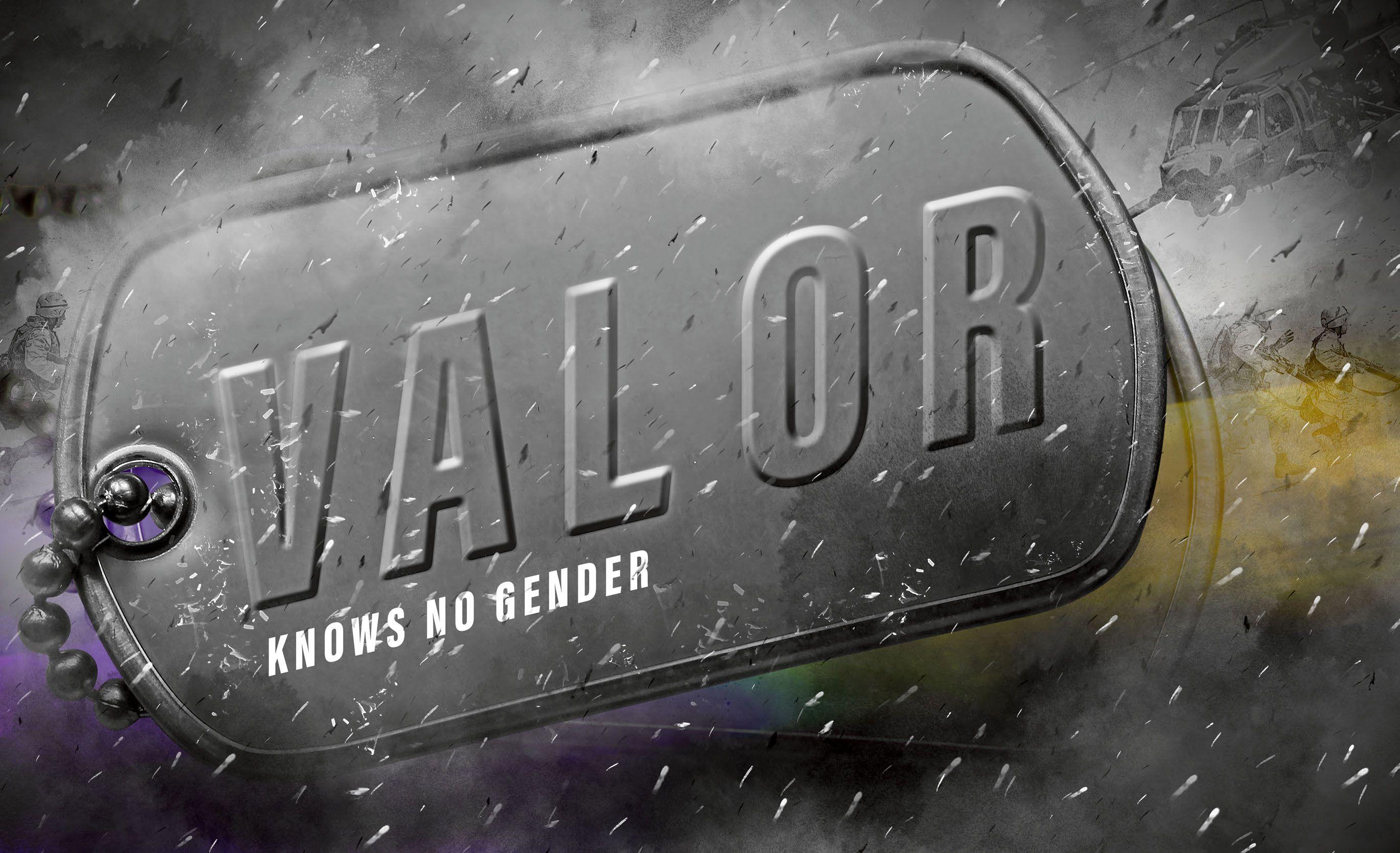

‘There is an old adage that says a man has to prove he’s not great and a woman has to prove she will not be a failure.’—Capt. Doris Vail, U.S. Navy, ret. STORY: LEIGH NEELY

In spite of many stories to the contrary, women have been a part of every war with American involvement. From the Revolutionary War to the War in Afghanistan, women served their country proudly. Most of the historic wars have evidence of women serving as men so they could fi ght alongside their

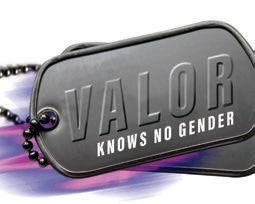



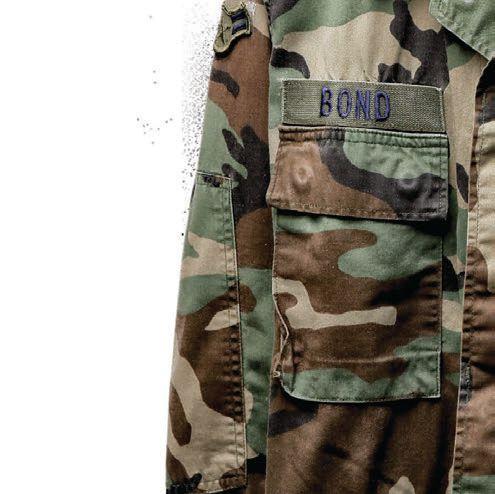
husbands, brothers, and fathers to keep democracy safe.
Recent statistics from the Florida Department of Veterans’ Affairs indicate there are 166,222 female veterans in the state, and 35,586 of them are 65 or older.
Many don’t feel they get the recognition they deserve. Lt. Cmdr. Kathryn Wilgus, U.S. Navy, retired, and a registered nurse, worked in an operating room in Kandahar, Afghanistan, during Operation Enduring Freedom. She and her husband served in Afghanistan and both proudly wear the familiar hats. However, Kathryn is frustrated because people thank her husband for his service and ignore her, even though her hat is like his except it says, “Afghanistan War Woman Veteran.”
“I’ve been pushed aside, and he’s the only one recognized,” Kathryn says. “And a lot of times, they’ll say, ‘Is that your hat? Did you serve?’ while men are immediately thanked for their service.”
Another unfortunate aspect for female veterans is many don’t know they’re eligible for the full range of federal and state benefi ts, and there are times women must go before a panel to prove their injuries are related to military services.
Capt. Doris Vail, U.S. Navy, retired, says companies like Walgreens and Lowe’s give veterans a discount. “I’ve given them my card and had them say, ‘Did your husband serve in the Navy?’ I tell them to look closer at the name on the card,” Doris says.
Neither soldier nor veteran is indicative of gender. In fact, Florida has the third-largest number of female veterans in the United States, and they are one of the fastest-growing segments of veterans.
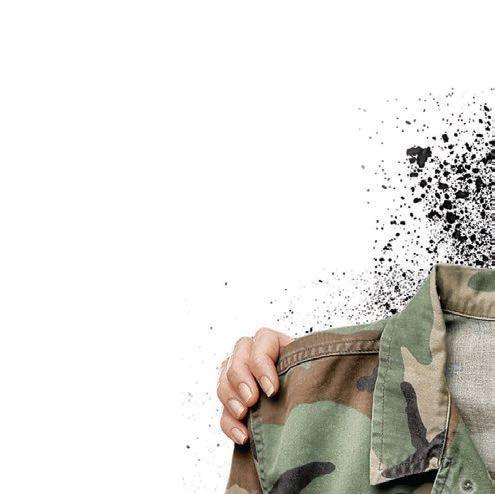
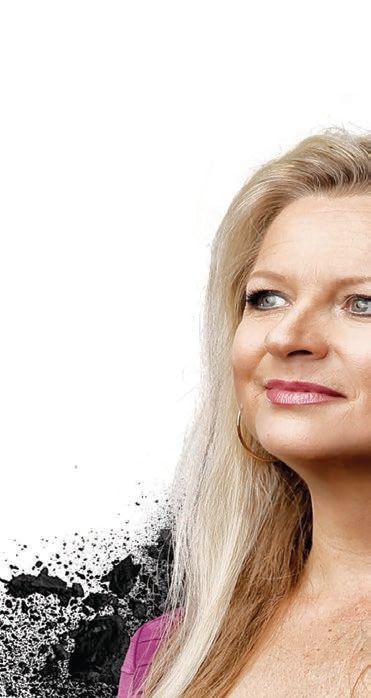


ANGELA CHAMBLISS
SENIOR AIRMAN, HONORABLY DISCHARGED, U.S. AIR FORCE
The reigning Mrs. America, Angela Chambliss served in the U.S. Air Force from 1990-1994, ending her career as a senior airman. She was a meteorologist charged with getting weather news to pilots to ensure safe fl ights to and from their base of operations.
“When I came in, the rating for error-free forecasts was about 80 percent for female meteorologists,” Angela says. “I was the fi rst to keep my people error-free. We were 99 to 100 percent error-free, and I also was the fi rst woman to work directly with pilots.”
She continued her education at
A TIMELINE OF WOMEN IN THE UNITED STATES MILITARY









Florida State University and earned a degree in atmospheric science, but was unable to fi nd a civilian job to fi t her qualifi cations. She eventually moved into makeup and hair styling and began working steadily behind the scenes of scholarship pageants. That led to her eventually becoming a contestant herself, winning Mrs. Florida and then Mrs. America at the
Pure International Elegant Pageant. As Mrs. America, Angela recently spent a week in Washington, D.C., working to get more done for veterans with post-traumatic stress syndrome (PTSS). “This is my platform as Mrs. America,” Angela says. “I spoke to a congressional panel on suicides because alternative therapies are not covered under VA benefi ts. My hope is that will change.”
She says Alabama has the highest rate of suicides among veterans, yet the government continues to want to use medication and label veterans’ problems as “mental illness.”
As Mrs. America in the Pure International Elegant Pageant, Angela will compete for the international title in June in Orlando. “Even if I don’t succeed at the next level, I will continue to work locally for this cause,” she says.
Angela also is a leader in her church, Frontier Church in Leesburg, where she was ordained as a minister in December 2015. As expected, her biggest supporters are her husband David, and her children, Briton Bond, 26, and Bethany Chambliss, 23.
ANGELA CHAMBLISS
1775-84
1812 1846-48 1861-65 1898 1917-18 ››
Revolutionary War—Women help husbands, serve as nurses and cooks, and do laundry with permission of commanding o icer. Deborah Sampson serves as a man until she is wounded, honorably discharged, and given pension.
War of 1812—Mary Marshal and Mary Allen are nurses on the USS United States as requested by Commodore Stephen Decatur. Mexican War—Elizabeth Newcom enlists as a man and marches 600 miles before discovery and discharge. American Civil War—Women serve in hospitals for the North and South, act as spies, and serve as soldiers disguised as men. Dr. Mary Walker receives the Medal of Honor. SpanishAmerican War—1,500 civilian women are nurses, support sta , spies, and, again, some are disguised as male soldiers. World War I— Women are allowed to join during last two years; 33,000 are nurses, support sta , spies, and a few disguised as men; 400 nurses die in the line of duty.
LT. COL. MARIANNE ESTES
RETIRED, U.S. AIR FORCE
Finding work after getting her undergraduate degree was tough for Marianne Estes, but within two weeks of submitting her paperwork to the USAF, she was called to go to Offi cers Training School in San Antonio. Her brother was attending the Air Force Academy, so she had no trouble selecting the branch where she would serve.
After joining the Air Force in 1979, Marianne spent 10 years on active duty. She began her work in administration, but decided she wanted more of a challenge. Her next assignment was with the Air Force in a maintenance squadron, but after a year of that, she became section commander in a civil engineering squadron.
“That gave me the prefi x showing I had command time, and after that, I went to work for the base commander as his executive offi cer at March Air Force Base in Riverside, California,” she says.
Working with contractors was the next assignment. “They have a special program called Education with an Industry, and there are only a couple of people that get pulled for this, but I did,” Marianne says.
Once she fi nished the course work, she went to work as a USAF representative at Lockheed Martin in Sunnyvale, California. As a liaison

The Sunshine State is home to the third-largest population of women veterans in the nation, with more than 166,000. Women veterans are one of the fastestgrowing segments of the veterans population. Of the approximately 21.3 million veterans nationwide, more than 2 million are women.
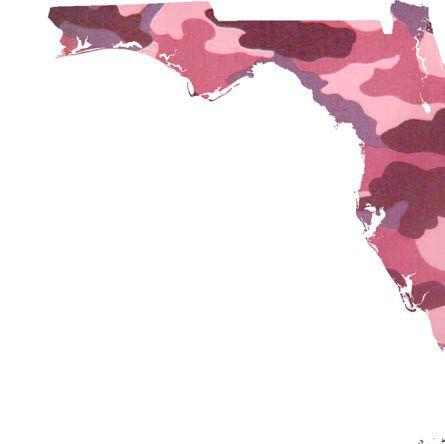
SPECIAL RESOURCES
Many women veterans don’t know they are eligible for the full range of federal and state benefits. Here are some resources for women veterans:
General resources in Florida: veteransflorida.org/resources
Florida Department of Veterans A airs
Cynthia Brown, women veterans coordinator
727.319.7440 brownc@fdva.state.fl.us
Veterans Villages by Habitat for
Humanity, Lake-Sumter, Florida
habitatls.org/veterans-village
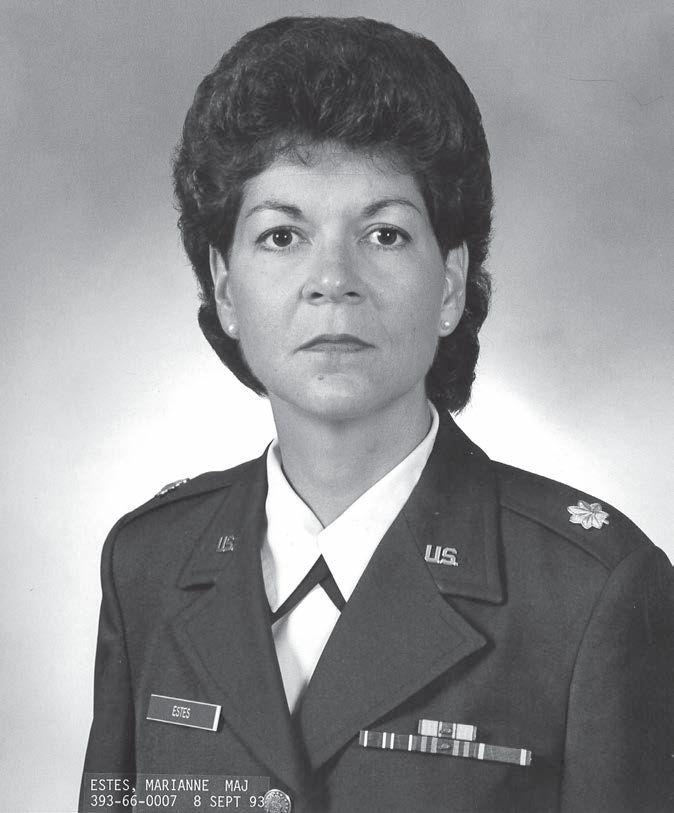
Florida Department of Health and Department of Veterans A airs
Created VA Service-Connected Disability program
floridahealth.gov


for the Air Force, she was given deluxe training in what Lockheed did with every contract it received from the USAF.
The next move was to WrightPatterson Air Force Base in Dayton, Ohio, to the Aeronautical Systems Division to oversee the modifi cation of the B-52 and the B-1B. She was one of the fi rst to use a simulator that was set up for more than one aircraft.
“I was pregnant, but I didn’t have that discrimination,” The Villages resident says. “When I told my commander, there were no congratulations, just frustration that they were going to have to replace somebody for a while.”
Following the birth of her second son, she moved to naval reserves and served there for 10 years.
While in the reserves, one of her most exciting adventures involved traveling to several bases in Germany in a government-issued car that couldn’t go over 65 mph. It became quite an adventure because she had to learn the location of the next base as she was leaving a base. With her government car, driving on the famous German Autobahn highway was not the adventure it could have been. The recommended speed is 80 mph, but there are areas where there is no speed limit.
The Air Force is a family affair for Marianne. Her brother, Dean, commissioned her, and she commissioned her son, Nathan. “My son has done better than any of us. He turned a pilot opportunity down and is a combat-ready offi cer, working behind the scenes,” she says.
In addition, her niece is a pilot with the Pentagon and her nephew also is a pilot.
LT. COL. MARIANNE ESTES

Though her retirement offi cially began in 2013, the Air Force always will be a part of Marianne’s life.
CMDR. LINDA DUNN

RETIRED, U.S. NAVY
Though she had intended to have a career teaching special education, Linda Dunn lost her job with the local school system and couldn’t fi nd another one. She decided to join the U.S. Navy in 1981. She did well on the test, but was told there were no openings for women as an electronic technician for three years. Her response, “I want to take the offi cer’s test.”
The recruiter tried to discourage her, reminding her it was a very diffi cult test and usually meant failure, but she insisted and took the test.
“About three weeks later, I got a call from a very disappointed recruiter who said, ‘Not only did you pass, but you got the thirdhighest score we’ve ever had in the valley,’” Linda says with a laugh. “The thing is, tests to me weren’t hard. I loved to take tests. I aced the physics test even though I’d never had physics.”
However, she couldn’t get into Offi cer Candidate School for a year, so she enlisted and went in as an E-3 due to her test score.
“They sent me to New London, Connecticut, where I was on the pier for the submarine tender,” and she adds, “I joined the Navy to see the world, and what I actually saw was the entire East Coast, but I enjoyed it.”
Linda’s career involved a lot of paperwork as a legal offi cer, school director for the boiler-water, feed-water guys—the personnel in the bottom of the ship that keep it running—public affairs, and personnel support detachment.
“The last thing I did was foreign liaison offi cer for CENTCOM in Tampa in charge of the South Pacifi c. Each of the countries would send over offi cers, and they were all higher-ranking offi cers, and we would work with them to help their countries send soldiers to fi ght in Iraqi Freedom and in Afghanistan, so it was a coalition, not an individual effort,” Linda says.
With the reserves, she picked Naples, Italy, for her two weeks of active duty, and a chance meeting with someone she’d been stationed with in Atlanta led to 90 days of active duty in Naples. She was scheduled to return the Friday after 9/11 but
1941-45 1948

CMDR. LINDA DUNN
1950-53 1962-72 1973 1976 1978 ››
World War II—1,500 civilian women are nurses; hundreds more are support sta , spies, and disguised as male soldiers.
Women’s Armed Integration Act passes, granting women permanent status as military personnel subject to authority and regulations and entitled to benefits. Korean War— 50,000 women serve abroad and at home; 500 Army nurses are in combat zones, and Navy nurses are on hospital ships. Vietnam War— 7,000 women, all volunteers, serve mostly as nurses in all five divisions of the military. Military draft ends for men, and all-volunteer military creates more opportunities for women. Service academies, including West Point, Naval Academy, and Air Force Academy, admit first women for training in military science. Women in Navy and Marines are allowed to serve on noncombat ships as technicians, nurses, and o icers.


that was canceled, and she was unable to go back.
Now living in Tavares, she does Overseas Adventure Tours, works with Lake Cares, Friends of the Tavares Library, and the Purple Heart Cruise Foundation with veterans.
LT. COL. JODY NELSON
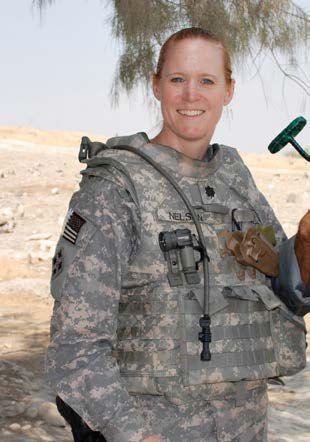

RETIRED, U.S. ARMY
As owner of the Spice & Tea Exchange of Brownwood, Jody Nelson spends her days selecting spices and teas and teaching her customers how to enhance their cooking with these fl avorful offerings. Prior to doing this, she was Lt. Col. Jody Nelson of the U.S. Army and a commander of a combat team.
Apparently, she likes things spicy in every area of her life as she chose to work with nuclear, biological, and chemical warfare.
“I did the job that nobody else wanted to do, and I asked for it,” Jody says. “It’s one of the smallest branches of the U.S. Army. I worried about nuclear war, so I wanted to know how you protect yourself.” The chemical part of the job involved protecting against it. She briefed those headed into areas where suspected chemical weapons might be used. “The more I knew, the more I could talk to troops more knowledgeably,” she says.
Her 28 years in the Army included serving in Afghanistan, Saudi Arabia, Bahrain, Uzbekistan, Tajikistan, and other signifi cant assignments.
“My aim was more toward crisis management, damage management, and I briefed all the commanders on what to expect in the areas where they were going,” Jody says.
Jody was the fi rst female combat commander in Afghanistan. She was with the 4th Infantry Division, 4th Combat Brigade and had 1,000 troops serving under her.
“What I did always affected the troops, and I enjoyed my soldiers. A commander is only as good as her forces,” Jody says.
Besides working with the Spice & Tea, Jody lives in The Villages and fosters service dogs, training them for Guardian Angels. The dogs stay with her for eight weeks to learn how to acclimate to public gatherings, and then they’re given to those who need them.
“This is how I give back,” Jody says. LT. COL. JODY NELSON

CAPT. DORIS VAIL
RETIRED, U.S. NAVY “When I entered the Navy, 2 percent were enlisted women. It was so restricted,” says Doris Vail, of The Villages. “There were no female captains, and we referred to our commander as the ‘head skirt.’ When I retired in 1984 as a Navy captain, there were only 10 captains on active duty.”
Doris saw a lot of changes for women during her 26 years in the Navy. She also saw many things that remained the same. She served in administration, communications, and as a personnel


offi cer. She was the only female offi cer in command at the Naval Air Station North Island in San Diego.
When she served in Rota, Spain, in the communication station, she was the only woman there. There were no restrooms for women so she had to use the commanding offi cer’s private toilet. “As the only woman, it was an interesting integration for the entire command,” Doris says.
Throughout her time in the navy, Doris was fortunate to continue her schooling, eventually getting her doctorate. She spent many years in Washington, D.C. While teaching at the National Defense University, she taught many of the newly released prisoners of war from Vietnam to help them integrate back into the workforce.
“It was a marvelous experience,” she says. “Most of them had a great sense of humor, and I felt honored to be a part of their group and socialize with them and their wives.”
During her naval career, Doris worked steadily to increase the involvement of women in the Navy. She helped get the fi rst woman enrolled in the Naval Academy and saw many restrictions end when more women were promoted to captain and admiral.
“I worked 12- and 14-hour days to be the best so my boss knew I could do what I was hired to do,” she says.

LT. CMDR. KATHRYN WILGUS
RETIRED, U.S. NAVY “Ijoined because in my high school I would have been voted ‘most likely not to succeed,’” Kathryn
Wilgus says. “When I decided to go back to school so I could join the Army, I thought at least this way, they would say she tried.” While a man can join the Army with a GED, women are required to have a high school diploma, so Kathryn went back to school that summer and got hers. She began her service in 1987 in the U.S. Army Reserve Delayed Entry Program. She was an operating room technician, rising to the rank of sergeant before leaving the reserves to pursue a nursing degree due to the encouragement of her fellow reservists. She was direct-commissioned as a lieutenant junior grade in the Navy Nurse Corps reserves in 2004, assigned to Operational Hospital Support Unit in Jacksonville. Her deployment to Landstuhl, Germany, was in 2009 in support of Operation Enduring Freedom with rotations on the USS Continuing Promise Mission in Antigua, Colombia, and Panama. “My fi rst active duty in Afghanistan 1991-92 1993 “THERE WERE NO FEMALE CAPTAINS, AND WE REFERRED TO OUR COMMANDER AS THE ‘HEAD SKIRT.’.” —CAPT. DORIS VAIL Persian Gulf War—41,000 women are deployed to the combat zone; two are taken captive. Congress authorizes women to fly combat missions. 1998 2000 2003 was being on the Medical Embedded Training Team,” Kathryn say. She was a mentor for Afghan National Army nurses and surgeons and 2004 2005 2018
Women authorized by Congress to serve on combat ships.
Operation Desert Fox in Iraq—Women fighter pilots fly combat missions o aircraft carrier. Persian Gulf— Capt. Kathleen McGarth is the first woman to command a U.S. Navy warship. War in Iraq— Three Army women become POWs during the first days of the invasion. Col. Linda McTague becomes the first woman commander of a fighter squadron in U.S. Air Force history. War on Terror—Sgt. Leigh Ann Hester is the first woman awarded the Silver Star for combat action. Source: The Colonial Williamsburg Foundation Women serving in the U.S. military around the world—More than 200,000 in five branches; almost 200,000 in the reserves; and 470,851 in the National Guard. Source: Statistic Brain


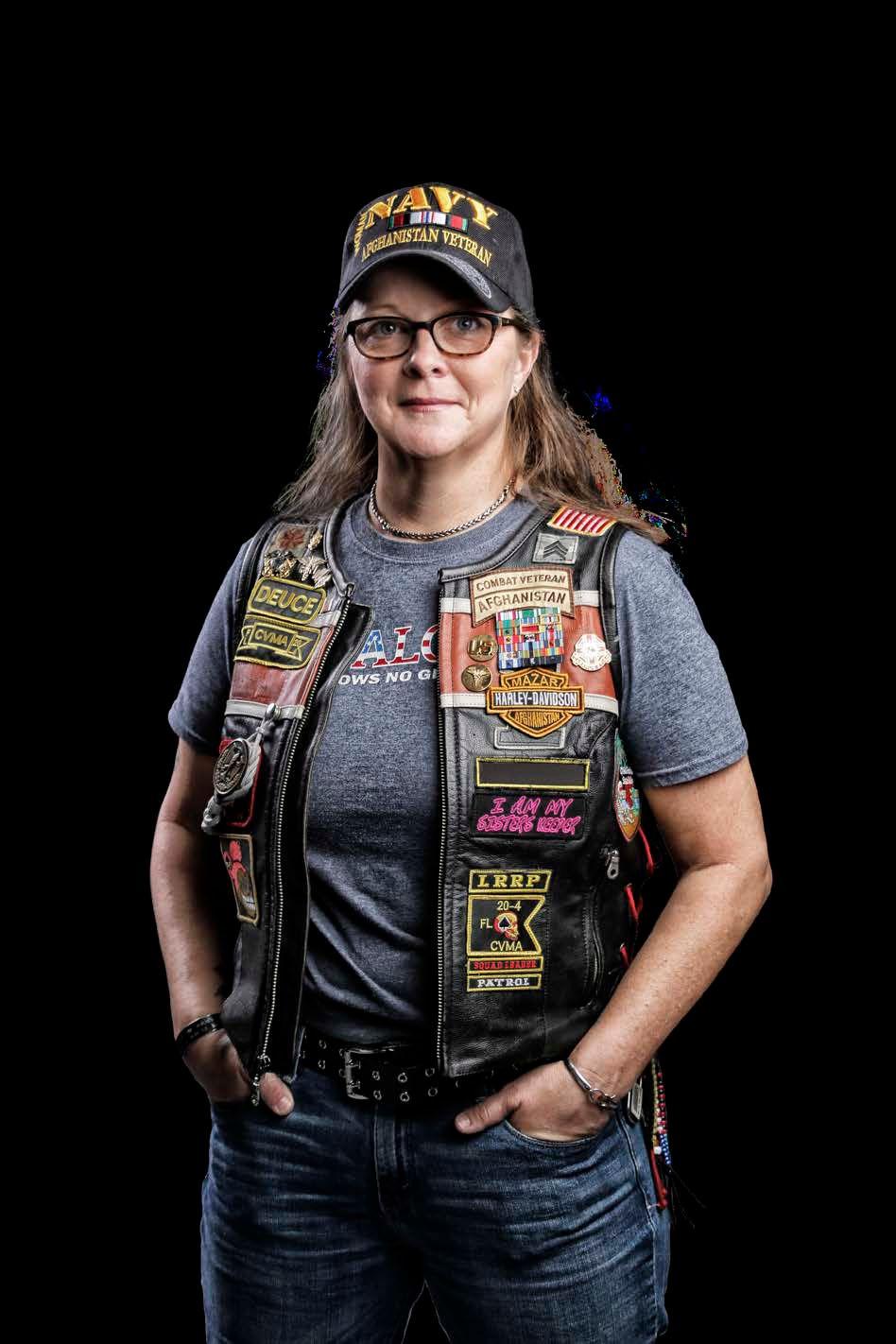
volunteered for the Female Engagement Team, leaving the compound to interact and train Afghan policewomen.
“They were being raped, and I tried to help them,” Kathryn says. “I always called myself a ‘MacGyver’ nurse. You have to make it happen no matter what.”
One of the physical problems Kathryn deals with is back pain. The chronic pain is the result of wearing a combat vest made for a man. Not having the proper fi t puts pressure on the spine and hips.
Kathryn went from Afghanistan to fi ll a critical need billet in Kandahar for Operation Enduring Freedom. As an operating room nurse, she was charged with maintaining operational readiness in a combat zone and as a training offi cer. It was here she faced her greatest challenges. Treating battlefi eld injuries is often fast, grueling work with few rewards.
“You never know how your patient does after leaving your operating room,” Kathryn says. “We just got them ready to be able to fl y to Germany for more care.”
However, when one patient received a Purple Heart, Kathryn remained in the room to watch. Each soldier is given a book and those attending can sign it, which Kathryn did. This man was her second patient and was severely injured. Later, he contacted everyone who signed his book to thank them for the care he received. With a smile, Kathryn says, “I fi nally got to see somebody I helped.”
During a retirement ceremony, there is a fl ag demonstation called “Olde Glory Presentation.” Representatives from each branch and rank she had served attended Kathryn’s ceremony. They passed the fl ag from one white-gloved soldier to the next with tributes to Old Glory and its beauty as the American fl ag. It was this man, Kathryn’s second patient, who had lost a hand, who passed the fl ag to her to end her ceremony.
It is Kathryn’s wish that those in the highest ranks of the military will realize that what happens to their medical teams in battle is a different kind of battlefi eld trauma. She still suffers PTSS and hopes to eventually see support groups for medical personnel and women to create a unique kind of bond for participants.
Female veterans of all branches of the military service serve with pride and reverence for their country and their fl ag.
“I am a woman. I served in the military. I am a veteran.”—Anonymous
VETERANS AFFAIRS DATA ON SUICIDE
Findings show there is variability across the nation in the rates and numbers of deaths by suicide among veterans. Overall, the veteran rates mirror those of the general population in the geographic region, with the highest rates in Western states. While there are higher rates of suicide in some states with smaller populations, most veteran suicides are still in the heaviest populated areas.
The suicide rate among middle-age and older adult veterans remains high. In 2014, approximately 65 percent of all veterans who died by suicide were age 50 or older.
After adjusting for di erences in age and sex, risk for suicide was 22 percent higher among veterans when compared to U.S. nonveteran adults. After adjusting for di erences in age, risk for suicide was 19 percent higher among male veterans when compared to U.S. non-veteran adult men. After adjusting for di erences in age, risk for suicide was 2.5 times higher among female veterans when compared to U.S. nonveteran adult women.


Sp rkling with success
Arden’s Fine Jewelers loves to brighten the day of their valued customers.
PAID PROMOTIONAL FEATURE
Throughout the years, businesses in The Villages have come and gone. However, one business continues shining by impressing longtime clientele and new customers alike.
Arden’s Fine Jewelers opened 14 years ago, and the company’s meticulous attention to detail and superior customer service has stood the test of time.
“Many businesses that were open when we fi rst started are now gone,” says Nedra Townley, owner of Arden’s Fine Jewelers. “We’re one of the last men standing and we’re still going strong. We’ve grown right alongside The Villages.”
A big reason for that is because Nedra invests in continuing education, allowing her team of 11 employees to keep abreast of the most current fashions and trends in the jewelry industry. A master jeweler, a Gemological Institute of America (GIA)-certifi ed gemologist, and a laser welder are all part of her team. In addition, her company is one of a dozen or so jewelry stores throughout the country that is certifi ed as a diamond repair center by Hearts on Fire Diamonds, a privately held diamond jewelry design and manufacturing company.
“Continuing education and training allows us to offer the best quality, the best deals, the best designs, and the best pricing,” Nedra says.
It also allows the company to keep up with the everchanging demands of customers. A new generation of retirees is moving into The Villages and has focused its attention on custom jewelry. Nedra and her team began offering this service four years ago and today can design each piece of custom jewelry to fi t the individualized style of each customer.
“In the past year, the demand for custom jewelry has really grown,” Nedra says. “If someone has a diamond and wants to make a custom ring out of it, we will work with the customer until we get the design exactly the way she wants it.”
In addition to custom designs, Arden’s Fine Jewelers offers a wealth of other services—including jewelry and diamond appraisals, jewelry cleaning and repair, watch repair, and diamond upgrades. But despite the company’s staying power and continued growth, Nedra hasn’t lost sight of what has helped her business sparkle the most: superior customer service.
In fact, making customers happy is a point of pride for Nedra.
“People who moved to The Villages saved their money to live in the country’s nicest retirement community,” she says. “Therefore, they deserve nothing but the best. They expect a certain level of service. My staff respects that and goes above and beyond to deliver exactly what they deserve. We listen to customers. If we feel a change is needed we jump on it. If
